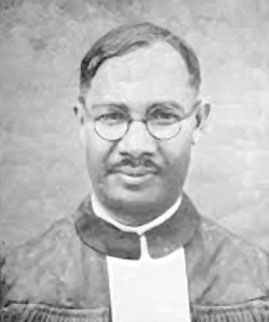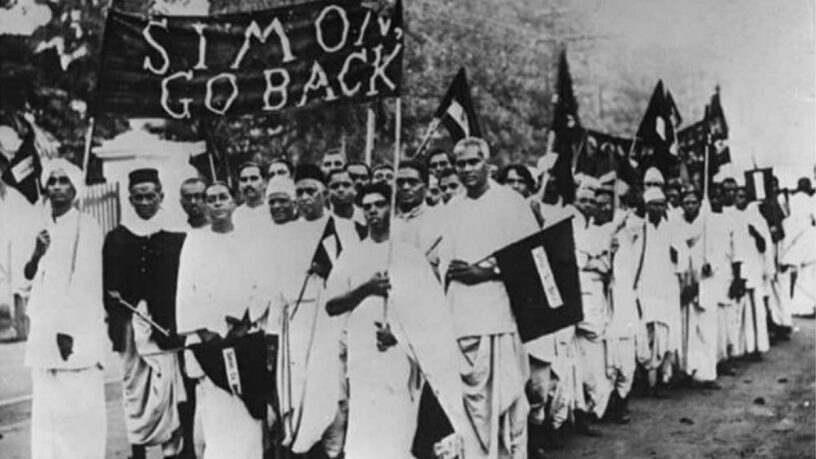October 25, 2025 12:24 pm
The Chhotanagpur Unnati Samaj, also known as the Chhotanagpur Improvement Society, was established in 1915 with a visionary agenda to uplift the tribal communities of Chhotanagpur. The organization emerged as a beacon of hope for the tribals, advocating for their rights, preserving their identity, and fostering socio-economic progress. Rooted in the cultural heart of Chhotanagpur, the society became a critical player in the region’s political, social, and cultural history.
Founders and Early Vision

The Chhotanagpur Unnati Samaj was founded by a group of visionary leaders—Jual Lakra, Pal Dayal, Bandi Ram Oraon, and Thevale Oraon—who recognized the pressing need to safeguard tribal rights and identity in the face of increasing external pressures. These leaders shared a profound commitment to their community and sought to create a platform where the aspirations and grievances of the tribals could be effectively communicated.
The primary goal of the organization was two fold:
- Protecting Tribal Identity: To ensure that the unique cultural and social identity of the tribals was not eroded by external influences.
- Advocating Tribal Aspirations: To act as a bridge between the tribal communities and the British administration, voicing the needs and concerns of the people.
Activities and Publications of Chhotanagpur Unnati Samaj
One of the key initiatives of the Chhotanagpur Unnati Samaj was the publication of a magazine called Adivasi, which served as a vital medium for spreading awareness and educating the tribal population. The magazine was published in English, Hindi, Kurukh, and Mundari, ensuring accessibility across linguistic barriers.
Through Adivasi, the organization sought to:
- Highlight tribal issues and challenges.
- Promote cultural revival by publishing articles on tribal traditions, folklore, and heritage.
- Inform and empower tribals by providing insights into political developments and their implications.
The multilingual nature of the magazine reflected the society’s commitment to inclusivity and its efforts to engage a diverse tribal population.
Role of Chhotanagpur Unnati Samaj in Opposition to the Simon Commission
In 1928, the Chhotanagpur Unnati Samaj demonstrated its growing political awareness and activism by vehemently opposing the Simon Commission during its visit to Patna. The Commission, which lacked Indian representation, was seen as an affront to India’s aspirations for self-rule.

The organization’s opposition to the Simon Commission highlighted:
- Its alignment with the broader nationalist movement in India.
- A commitment to ensuring that tribal voices were included in discussions about India’s future governance.
This act of defiance underscored the society’s evolving role as a political force advocating for both tribal and national interests.
Reorganization of Chhotanagpur Unnati Samaj in the 1930s
The 1930s marked a transformative period for the Chhotanagpur Unnati Samaj. Under the leadership of Joel Lakra, the organization underwent significant reorganization, adopting the form of a movement rather than merely a society.
Key aspects of this reorganization included:
- Expanding its reach to involve a larger tribal population.
- Mobilizing communities to actively participate in socio-political movements.
- Strengthening its efforts to address systemic issues like land alienation, economic exploitation, and social discrimination.
This reorganization signified the society’s evolution into a dynamic movement, capable of addressing the complex and multi-dimensional challenges faced by the tribal communities.
How it was part of a Larger Tribal Movement
The Chhotanagpur Unnati Samaj was not an isolated entity but part of a broader tapestry of resistance and reform in Chhotanagpur. It worked alongside other significant movements and organizations, such as the Tana Movement and Kishan Sabha, contributing to a larger narrative of tribal empowerment and freedom struggle.
The region was home to countless warriors who braved tremendous odds and made ultimate sacrifices for their rights and dignity. The Unnati Samaj served as a rallying point for these efforts, uniting various tribal groups under a common cause.
Legacy of the Chhotanagpur Unnati Samaj
The legacy of the Chhotanagpur Unnati Samaj lies in its pioneering efforts to:
- Preserve Tribal Identity: The organization played a pivotal role in ensuring that the rich cultural heritage of the tribals was celebrated and safeguarded.
- Promote Socio-Economic Progress: By advocating for education, economic opportunities, and equitable policies, the society laid the groundwork for tribal development.
- Empower Tribal Voices: Through initiatives like Adivasi magazine and its political activism, the society empowered tribals to assert their rights and aspirations.
- Inspire Future Movements: The ethos and achievements of the Chhotanagpur Unnati Samaj inspired subsequent generations to continue the struggle for justice and equality.
Contemporary Relevance
Even today, the story of the Chhotanagpur Unnati Samaj resonates deeply, offering valuable lessons in community organization, cultural preservation, and grassroots activism. It stands as a testament to the power of collective action and the enduring spirit of the tribal communities of Chhotanagpur.
For historians, policymakers, and activists, the Chhotanagpur Unnati Samaj provides a compelling case study of how marginalized communities can organize and assert their rights in the face of systemic challenges.
Conclusion
The Chhotanagpur Unnati Samaj was a trailblazer in the socio-political and cultural revival of the tribal communities in Chhotanagpur. Its founders’ vision, its activities like the publication of Adivasi, and its courageous opposition to the Simon Commission reflect its multifaceted contributions to tribal and national causes. As a part of India’s larger freedom movement, the organization bridged the gap between tribal aspirations and the broader struggle for independence, leaving an indelible mark on history.
The story of the Chhotanagpur Unnati Samaj continues to inspire, reminding us of the importance of preserving cultural identities, advocating for marginalized communities, and fostering inclusive development.
This comprehensive exploration of the Chhotanagpur Unnati Samaj not only highlights its historical significance but also underscores its relevance in the ongoing discourse on tribal rights and empowerment.
The Role of Chhotanagpur Unnati Samaj in the Jharkhand Movement
The Chhotanagpur Unnati Samaj played a critical role in laying the groundwork for the Jharkhand Movement, which sought to create a separate state for tribals in the Chhotanagpur plateau. By addressing the socio-economic, cultural, and political concerns of the region’s tribal communities, the society became a pivotal force in the region’s early mobilization efforts for self-identity and governance.
Key Contributions to the Jharkhand Movement
- Advocating Tribal Rights and Unity
- The Chhotanagpur Unnati Samaj brought together various tribal groups across the Chhotanagpur plateau, emphasizing their shared identity, traditions, and challenges.
- It worked as a precursor to larger tribal movements in the region, fostering unity among the Oraon, Munda, and Santhal tribes.
- By raising awareness about issues like land alienation due to the Chhotanagpur Tenancy Act violations, it directly addressed the primary concerns that later fueled the Jharkhand Movement.
- Promoting Tribal Identity through Adivasi
- The society’s multilingual magazine, Adivasi, became a powerful tool for spreading awareness about tribal rights, culture, and social challenges.
- By publishing in languages like Kurukh and Mundari, it reinforced the distinct cultural identity of the tribal population, creating a sense of pride and belonging.
- The magazine also served as a platform to highlight grievances against exploitative policies and practices, further consolidating tribal support for collective action.
- Opposition to Colonial Exploitation
- The Chhotanagpur Unnati Samaj’s opposition to the Simon Commission in 1928 underscored its political alignment with nationalist movements and its demand for tribal representation.
- The society’s leaders recognized that colonial policies, particularly in land rights and forest access, disproportionately harmed tribal communities, and they made these issues central to their advocacy.
- Reorganization as a Movement in the 1930s
- Under the leadership of Joel Lakra, the society evolved into a full-fledged movement in the 1930s, mobilizing large-scale tribal participation.
- This transformation reflected the growing political consciousness of the tribals, as they demanded autonomy and protection from exploitation by both colonial authorities and non-tribal landlords.
- Inspiration for Future Tribal Movements
- The activities of the Chhotanagpur Unnati Samaj directly inspired later tribal leaders and movements, such as the Jharkhand Party under Jaipal Singh Munda, which became a central force in the fight for statehood.
- The society’s emphasis on preserving cultural heritage and addressing economic exploitation became core themes in the Jharkhand Movement.
Historical Significance
The Chhotanagpur Unnati Samaj was among the first organizations to articulate the socio-political aspirations of the tribals, which were central to the Jharkhand Movement. Key historical facts that underline its significance include:
- Impact on Land Rights: The society’s efforts to address land alienation led to increased awareness and demands for stricter enforcement of the Chhotanagpur Tenancy Act (1908), which prohibited the transfer of tribal land to non-tribals. This issue remained a cornerstone of the Jharkhand Movement.
- Cultural Revival: By promoting tribal languages, folklore, and traditions through Adivasi, the organization strengthened the cultural foundation of the movement.
- Mobilization of Tribals: The society’s transformation into a movement in the 1930s brought tribal issues into the mainstream political discourse, setting the stage for future mobilizations.
- Pioneering Advocacy: The Chhotanagpur Unnati Samaj’s early focus on tribal autonomy and rights influenced the formation of later organizations that directly campaigned for Jharkhand statehood.
Legacy in the Jharkhand Movement
The Chhotanagpur Unnati Samaj’s contributions to the socio-political awakening of the region’s tribal population were instrumental in shaping the Jharkhand Movement. Its efforts to unite tribals, preserve their cultural identity, and fight against exploitation provided a blueprint for the later demands for a separate state.
As one of the earliest organizations to articulate tribal aspirations, the Chhotanagpur Unnati Samaj remains a foundational chapter in the history of Jharkhand, symbolizing the resilience and unity of the tribal communities in their quest for dignity and autonomy.
PYQ :
Q.1 Which of the following personalities was involved in the formation of ‘Chotanagpur Unnati Samaj’ in 1913 CE? ( 7th to 10th JPSC Exam 2021)
(A) Father Constant Lievens
(B) Theble Oraon
(C) Jaipal Singh Munda
(D) Kartik Oraon
Correct Answer: (D) Kartik Oraon
Topic: Tribal Movements and Social Reform in Jharkhand
Explanation: ‘Chotanagpur Unnati Samaj’ was a reform movement aimed at promoting social, cultural, and educational progress among the tribal communities of Chotanagpur. It focused on curbing the exploitation of tribals and fostering unity. The organization emphasized educational development and social reforms to uplift the tribal population. Among the options:
- Father Constant Lievens is known as the “Apostle of the Chotanagpur Tribals” for his missionary work but was not directly associated with this movement.
- Theble Oraon was a tribal leader but not connected with the formation of this society.
- Jaipal Singh Munda, a notable tribal leader and founder of the Jharkhand Party, was active later in the 20th century.
Posts related to JPSC preparation on LearnPro’s website:
- JPSC Notes: Access expertly curated notes covering essential topics for both JPSC Prelims and Mains exams.
- 14th JPSC PT Exam Comprehensive Test Series: Enhance your preparation with a structured test series designed to cover all aspects of the JPSC Preliminary Test syllabus, emphasizing Jharkhand-specific topics and current affairs.
- JPSC Notification 2024: Stay informed about the latest updates, including exam dates, eligibility criteria, and vacancy details for the JPSC 2024 examination.
- General Introduction to Jharkhand for JPSC Exam: Gain a comprehensive understanding of Jharkhand’s history, geography, economy, and culture, crucial for the JPSC exam.
Visit Official JPSC Website : https://www.jpsc.gov.in/


